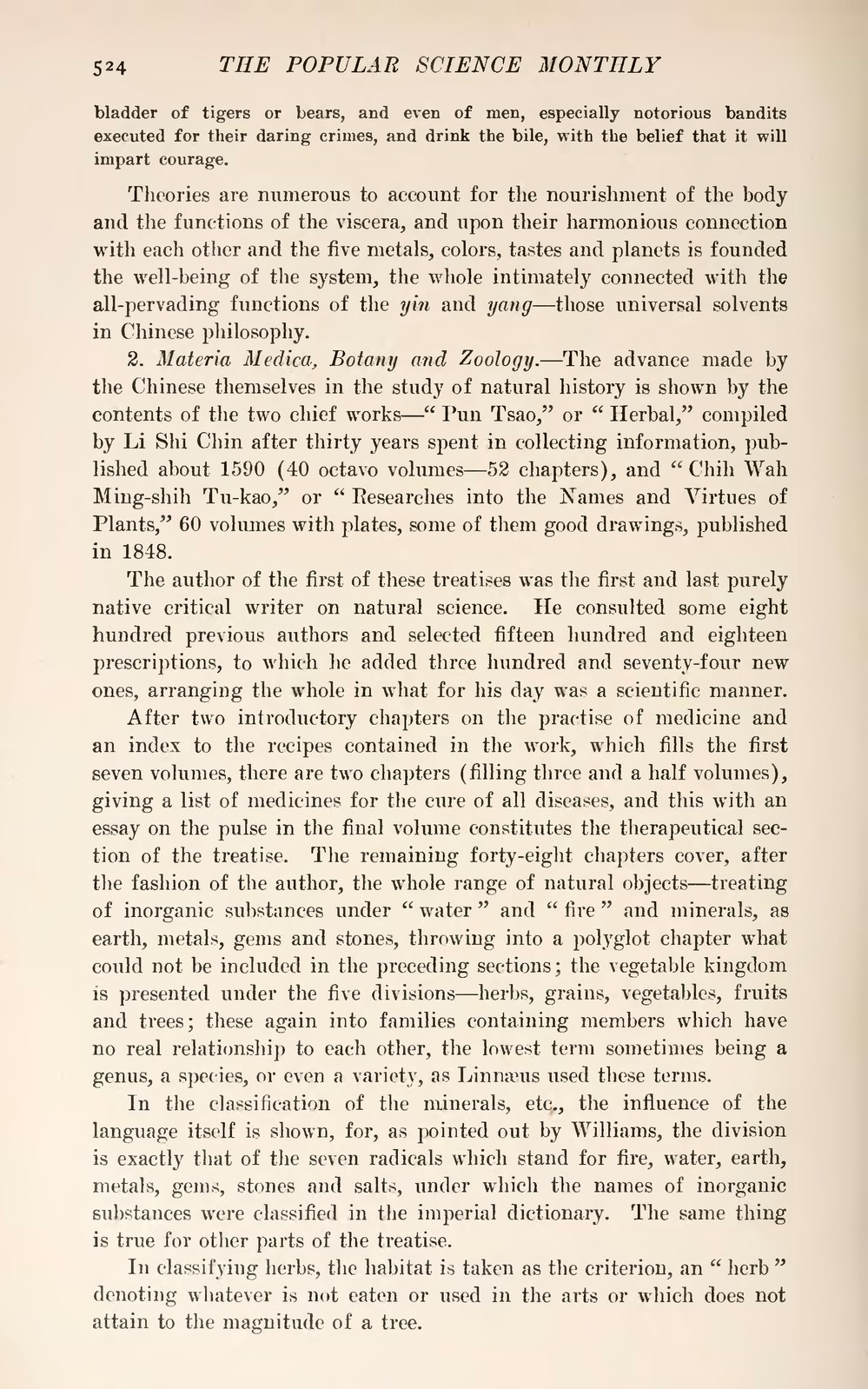Theories are numerous to account for the nourishment of the body and the functions of the viscera, and upon their harmonious connection with each other and the five metals, colors, tastes and planets is founded the well-being of the system, the whole intimately connected with the all-pervading functions of the yin and yang—those universal solvents in Chinese philosophy.
2. Materia Medica, Botany and Zoology.—The advance made by the Chinese themselves in the study of natural history is shown by the contents of the two chief works—"Pun Tsao," or "Herbal," compiled by Li Shi Chin after thirty years spent in collecting information, published about 1590 (40 octavo volumes—52 chapters), and "Chili Wall Ming-shih Tu-kao," or "Researches into the Names and Virtues of Plants," 60 volumes with plates, some of them good drawings, published in 1848.
The author of the first of these treatises was the first and last purely native critical writer on natural science. He consulted some eight hundred previous authors and selected fifteen hundred and eighteen prescriptions, to which he added three hundred and seventy-four new ones, arranging the whole in what for his day was a scientific manner.
After two introductory chapters on the practise of medicine and an index to the recipes contained in the work, which fills the first seven volumes, there are two chapters (filling three and a half volumes), giving a list of medicines for the cure of all diseases, and this with an essay on the pulse in the final volume constitutes the therapeutic section of the treatise. The remaining forty-eight chapters cover, after the fashion of the author, the whole range of natural objects—treating of inorganic substances under "water" and "fire" and minerals, as earth, metals, gems and stones, throwing into a polyglot chapter what could not be included in the preceding sections; the vegetable kingdom is presented under the five divisions—herbs, grains, vegetables, fruits and trees; these again into families containing members which have no real relationship to each other, the lowest term sometimes being a genus, a species, or even a variety, as Linnæus used these terms.
In the classification of the minerals, etc., the influence of the language itself is shown, for, as pointed out by Williams, the division is exactly that of the seven radicals which stand for fire, water, earth, metals, gems, stones and salts, under which the names of inorganic substances were classified in the imperial dictionary. The same thing is true for other parts of the treatise.
In classifying herbs, the habitat is taken as the criterion, an "herb" denoting whatever is not eaten or used in the arts or which does not attain to the magnitude of a tree.
